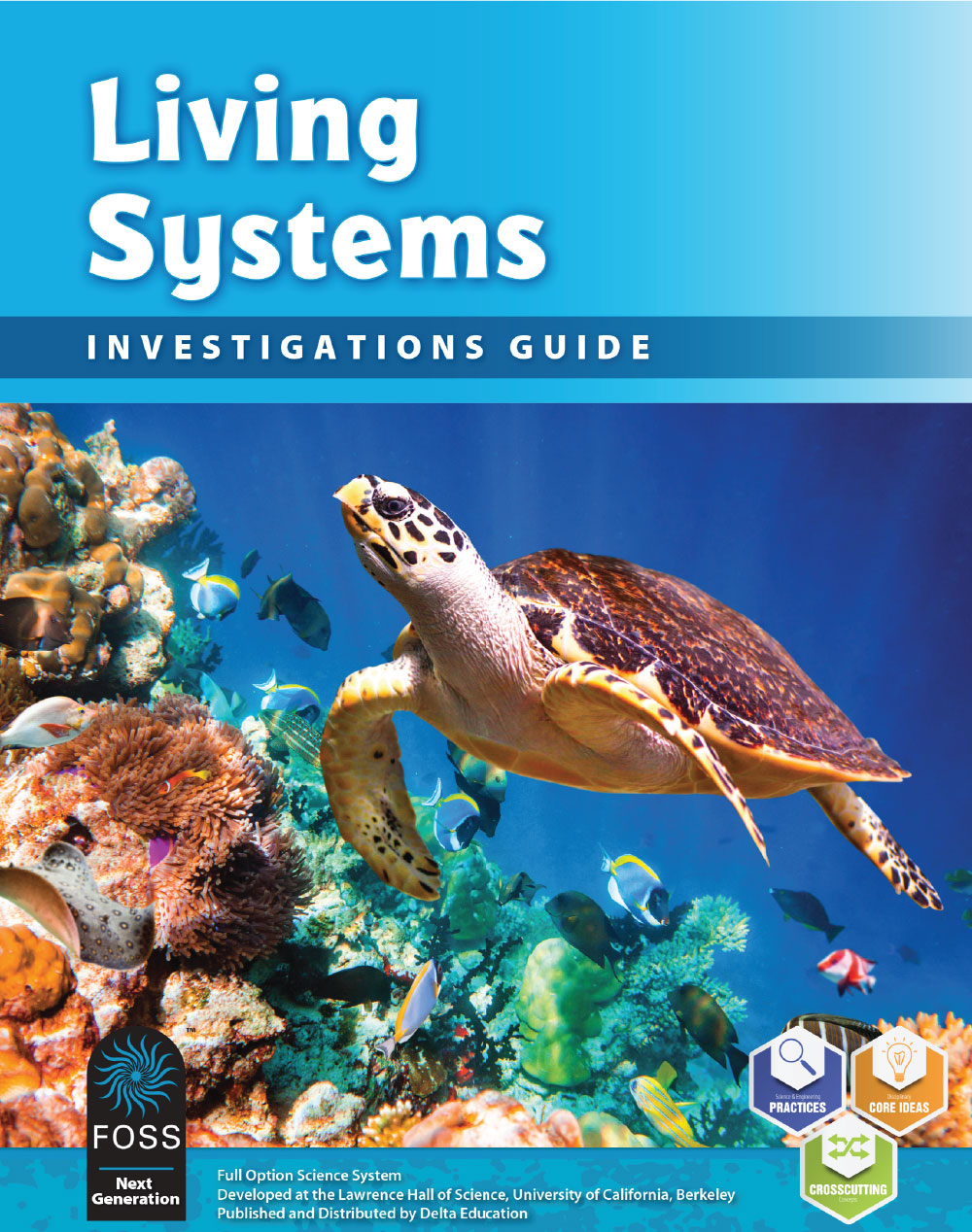FOSS Next Generation Living Systems
Grades 5

The Living Systems Module takes a look at life at every level of organization—from biosphere to individual organisms—to acknowledge that it is complex, involving multiple parts working together in systems to maintain the viability and vigor of the system. Understanding living systems—ecosystems, populations, and individual organisms—is a critically important perspective, leading toward an appreciation of the diversity and wonder of life on Earth.
Investigation 1: Systems
Students are introduced to a system as a collection of interacting parts that work together to make a whole or produce an action. They explore Earth as a system, focusing on the biosphere and describing ecosystems by looking at feeding relationships and energy transfers, described as food webs. Each group of students sets up a red worm habitat to study detritivores and the role of decomposition in ecosystems.
Investigation 2: Nutrient Systems
Students investigate nutrient systems of yeast, plants, and animals. They design an investigation to determine the necessary conditions for activating dry yeast. They plant wheat and observe the seedlings to determine which plants have chlorophyll. Students infer that the plants growing in light are producing food to provide nutrients to their cells. Students investigate how animals acquire nutrients by eating and digesting food.
Investigation 3: Transport Systems
Students learn that all cells have basic needs: water, food, gas exchange, and waste disposal. They explore the transport systems that multicellular organisms have for moving nutrients and wastes. Students investigate leaf transpiration, model a human heart system, and investigate their lung volume to find out about the interacting parts of the vascular system in plants and the circulatory and respiratory systems in humans.
Investigation 4: Sensory Systems
Through video, text, and simulations, students learn about the role of sensory and motor neurons in brain messages. They explore ways that animals communicate through sound, visual displays, and smell. They find out about the role that instinct and learned behavior plays in the life of animals. To bring closure to the study of systems, students find out about the North Atlantic Ocean ecosystem and its importance in the carbon cycle.